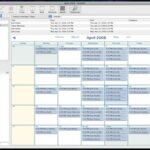Everyone uses something to help them keep track of their appointments, tasks and reminders. It might be a wall calendar, a note on the refrigerator, a book day planner, or an electronic day planner. I even use people to help me remember things. “Remind me to give the cat her medicine,” I say to my husband. But what works for one person, doesn’t always work for another. Take electronic day planners and book day planners. I have used both in the past and am still undecided as to which one is best.
When I first started keeping track of my appointments, I used a yearly day planner, about the size of a checkbook that fit neatly in my purse. This worked out great until manufacturers of this handy tool decided to give us a little more for our money and started making them one and a half year planners. Pretty nice, except I could never find one that picked up where the last one left off.
I then decided to use the bigger day planner about eight and one-half inches by 11 inches. There were many types to choose from, but I finally opted for one that provided a larger calendar with more space to write in and had areas on the side or at the bottom to make additional notes. This worked great through my college days for writing down not only appointments, but class assignments and class changes. It was thin and didn’t weigh much, so I just carried it with my other books.
After college I found the size too big and as I didn’t have to write down assignments any more, I went back to my year and half planner. I just ignored the half year and would buy a new one every year. This worked out ok, unless I had more than one appointment to write down for any given day.
With the emergence of e-mail also came the electronic calendar. Wow! This was great. I no longer had to carry around a book day planner. I could keep track of all my appointments and reminders on the computer. Time proved this wasn’t so great. You couldn’t put the PC in your purse, but you could print out a paper copy of your appointments for that day and take it with you. But the PCs back then took a long time to start up and if you were pressed for time, this was not convenient. Also, what if you forgot to print out your daily calendar?
Then along came the electronic pocket day planner. I actually had one of the very first electronic day planners. It was the about the size of a checkbook, had its own docking station and software. It had a small keyboard for typing in text. It didn’t sync up with Outlook or other email software, only it’s own, but it did a good job. I would enter appointments and contacts on the computer, sync the pocket calendar with it and away I would go with the device in my purse. I could enter new appointments, entering as much text as needed, during the day and then sync the new entries at night. As new technology comes out almost every three months, I used this device for approximately one year before it became obsolete.
I graduated from the electronic pocket day planner to a Palm Pilot. This was much better as it would sync with my appointments, email and contacts listed in Outlook. I had more room in my purse as it was smaller than the electronic day planner, about the size of a man’s wallet. Again things change and so did the Palm Pilot. Instead of buying a new one, I opted to purchase a smartphone.
I thought this would be the greatest device yet as I wouldn’t have to carry a phone and a Palm Pilot because they would be combined. I could sync the smartphone with Outlook the same as my old Palm Pilot, use it as a phone and even take pictures. It worked great as a day planner, but as a phone, not so good. It got to where it wouldn’t ring and that was only after six months of use. I traded it for another one, but it eventually did the same thing. I went back to a regular cell phone and purchased a Dell Pocket PC.
The Dell Pocket PC, which I currently have today is one of the best, outside of a Blackberry. It’s the same size as a Palm Pilot and it not only syncs my emails, contact and appointments, I can access the Internet, provided I have an Internet connection. It has wireless capabilities and I can create and open Microsoft Office documents and play games. I’ve had it about three years, so I know it’s approaching, if it hasn’t surpassed its obsolete time.
A few more downfalls of electronic day planners are:
1. When they don’t function right, they may cause double or more entries and the only way to fix it is to wipe them clean, removing all data and start over with a new sync.
2. They become outdated very quickly.
3. They need to be charged.
4. The typing area for new entries is not big and neither is the screen.
5. Batteries need replaced (added cost).
6. If they have Internet capabilities, you may want to access the Internet, so there will be a cost for this.
7. They can be easily lost.
Some downfalls of book day planners are:
1. In order to store enough appointment information in them, they have to be big.
2. You have to carry a big book around with you.
3. If you make a mistake and have used a pen, you have to mark it out or use correction fluid or tape to correct.
4. They can be easily lost.
5. There is no security device, so anyone can open it and view your entries.
6. You can’t access the Internet with one or make a phone call or take a picture.
7. You can’t send or receive email.
As I stated above, what works for one person, may not work for another. Each person has to decide what they can and can’t do without. I have found that I can’t do without either one. I have my Dell Pocket PC, but I also have a small checkbook size day planner in my purse. Manufacturers are finally making them as one and two year planners again. The only problem is I need to consult both when someone asks me if I have any plans on a certain day.
Source: Microsoft, Dell





